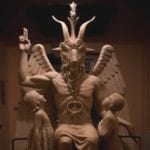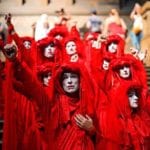 Weird Stuff
Weird Stuff  Weird Stuff
Weird Stuff  Our World
Our World 10 Ways Your Christmas Tree Is More Lit Than You Think
 Movies and TV
Movies and TV The 10 Coolest Stars to Set Sail on The Love Boat
 History
History 10 Things You Didn’t Know About the American National Anthem
 Technology
Technology Top 10 Everyday Tech Buzzwords That Hide a Darker Past
 Humans
Humans 10 Everyday Human Behaviors That Are Actually Survival Instincts
 Animals
Animals 10 Animals That Humiliated and Harmed Historical Leaders
 History
History 10 Most Influential Protests in Modern History
 Creepy
Creepy 10 More Representations of Death from Myth, Legend, and Folktale
 Technology
Technology 10 Scientific Breakthroughs of 2025 That’ll Change Everything
 Weird Stuff
Weird Stuff Ten Bizarre Facts About The Doge Meme
 Our World
Our World 10 Ways Your Christmas Tree Is More Lit Than You Think
 Movies and TV
Movies and TV The 10 Coolest Stars to Set Sail on The Love Boat
Who's Behind Listverse?

Jamie Frater
Head Editor
Jamie founded Listverse due to an insatiable desire to share fascinating, obscure, and bizarre facts. He has been a guest speaker on numerous national radio and television stations and is a five time published author.
More About Us History
History 10 Things You Didn’t Know About the American National Anthem
 Technology
Technology Top 10 Everyday Tech Buzzwords That Hide a Darker Past
 Humans
Humans 10 Everyday Human Behaviors That Are Actually Survival Instincts
 Animals
Animals 10 Animals That Humiliated and Harmed Historical Leaders
 History
History 10 Most Influential Protests in Modern History
 Creepy
Creepy 10 More Representations of Death from Myth, Legend, and Folktale
 Technology
Technology 10 Scientific Breakthroughs of 2025 That’ll Change Everything
Top 10 Satanic Scares In Recent Memory
Fear of the Devil and evil forces operating in the world goes back thousands of years. In the US, such scares can be traced as far back as the earliest settlers. Many of the first pilgrims inherited their beliefs and fears from European folktales, legends, and ongoing Christian mythology. However, belief in supernatural agency and in the Devil influencing susceptible people has never really gone away. This list looks at ten of the top Satanic scares in recent times. Many of these cases occurred in the United States during the Satanic panic of the 1980s.
10 Santa Muerte Murders
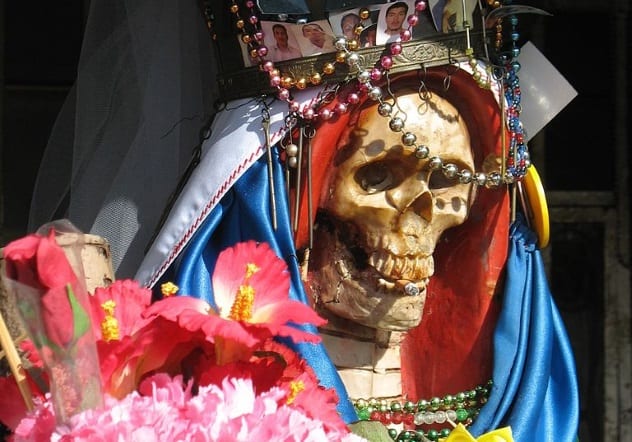
Nuestra Senora de la Santa Muerte (or Santa Muerte, as she is often called) is understood to be a personification of death. She is a popular but unofficial saint among Mexican Catholics and Santeria practitioners. More recently, she has made inroads among Latinos in the United States.
Researchers aren’t entirely certain about the origins of this saint. She may be a carryover from Aztec times or a more recent innovation. Regardless, the popularity of Santa Muerte has exploded over the past 100 years. At first, it was in secret, but since the early 2000s, her devotion has become very public. While most of this devotion is benign, a number of bizarre murders have also been associated with the figure.
In 2012, a ten-year-old boy named Jesus Octavio Martinez Yanez went missing from his home in Mexico. Investigators discovered a nearby shrine to Santa Muerte surrounded by blood. When they pressed the locals, they also found the bodies of three children. It’s not clear why the children were killed, but several suspects in the area were arrested and charged with performing human sacrifices. Locals believe that the children were murdered in exchange for mystical powers from the saint.[1]
Since then, police have periodically labeled the cult around the saint as a dangerous Satanic sect. Catholic officials have also vocally condemned it and tried to shut down its public practice. Even Pope Francis himself recently denounced the “macabre” cult and equated it with Satanism.
9 Judas Priest Teen Suicide Trial
Judas Priest is one of the most long-standing and successful heavy metal bands in history. However, in 1990, their music found them under a different sort of spotlight: as defendants in a court case.
Several years before the trial, two young adults from Sparks, Nevada, attempted suicide, with one succeeding, while allegedly listening to the song “Better by You, Better than Me.” (The survivor died from an overdose a few years later.) A letter was discovered in which one of the victims claimed to have been “mesmerized” by alcohol and Judas Priest. The grieving parents apparently took this to mean that their children were indoctrinated by Satanic messages in the lyrics. Their suspicions increased when people they hired to decipher the lyrics “discovered” hidden messages when played in reverse. These messages encouraged people to “try suicide” and to just “do it.” They also reported experiencing nightmares involving gun rampages after listening to the songs in reverse.[2]
Though hidden messages or “backmasking” was already becoming discredited at that time, it didn’t stop the families from pressing charges. They filed a lawsuit against CBS Records and the band, seeking unspecified monetary compensation. Rob Halford, the lead singer of Judas Priest, appeared in court and testified during the trial. He dismissed claims that his band would go to the length of implanting sinister messages in its music. Ironically, he pointed out that he actually lived a very straight-edge lifestyle compared to his stage persona. He also identified himself as a Christian man who was not interested in corrupting the youth.
Fortunately, the judge was not convinced that backward messages subliminally influenced the victims. The lawsuit was dismissed.
8 Satanic Toys, Cartoons, And Cereal
Satanic panic saw its heyday in the US during the 1980s. Many elements of popular culture were perceived to not only be going against Christian values but actively promoting Satanic ones. During this time, more than a few enterprising authors and researchers found their fame running modern-day witch hunts exposing “secret” Satanic material. One of the more infamous pairs was Pastor Gary Greenwald and Phil Philips, who took the paranoia to an entirely new level.[3]
The pair took particular issue with products marketed to children—namely toys, films, and breakfast cereals. They claimed that these products were subliminally designed to influence children and indoctrinate them with Satanic and pagan tenets. For instance, they suggested that Darth Vader was an homage to Norse deities and that the Force of the Star Wars universe was a form of witchcraft. They even suggested something as innocent as the Smurfs were coded symbols for death and destruction.
As part of their action plan, they released a television special, audio book, and paperback detailing their claims that toys and cartoons are introducing millions of children to the occult and paganism. They even organized boycotts against popular children’s cereal brands and certain Saturday morning cartoons. Fortunately, their activism didn’t spread very far beyond Evangelical Christian circles.
7 Dungeons & Dragons

Dungeons & Dragons (D&D) is the most popular tabletop fantasy game in the world. Since its inception in the 1970s, the game system has since brought millions of gamers and storytellers together. However, during the panic around consumer products and their supposed Satanic links in the 1980s, D&D was cast under suspicion. Gary Greenwald and Phil Philips targeted Dungeons & Dragons during their toy box crusade, but they were hardly the only ones to do so—especially after several teen role-players killed themselves.
In 1979, a 16-year-old disappeared from Michigan State University. An investigator hired by the parents discovered he was into role-playing games. When he was found dead from a self-inflicted gunshot wound the following year, many commentators blamed D&D for influencing him to take his own life. Similar cases followed in the early 1980s. The mother of another suicide victim blamed her son’s obsession with D&D for causing his depression and trouble fitting in. She later claimed that by playing D&D, her son had a real curse placed on him that lead him to commit suicide. She sued TSR Inc, the game’s publisher, and formed an activist group called Bothered About Dungeons and Dragons (BADD).[4]
BADD launched a media campaign through numerous Evangelical Christian outlets. They claimed D&D indoctrinated young men into practicing cannibalism, necromancy, sexual perversion, and suicide. From there, other pundits took up the crusade against the game, and wider culture itself viewed gaming with suspicion for a time. For instance, the plot of the mainstream 1982 fantasy film Mazes and Monsters, starring Tom Hanks, suggested that tabletop gaming would lead to murderous delusions and fantasies.
Ironically, as the panic spread, so did awareness and interest for D&D. Sales for the rule books soared, and millions of prospective players were introduced to tabletop gaming.
6 Michelle Remembers
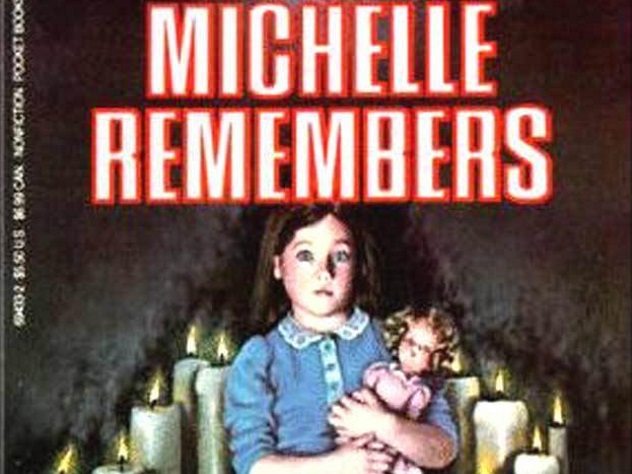
Concurrent with the 1980s Satanic panic revolving around consumer goods and household items was a similar panic over Satanic ritual abuse. Rather than focusing on products delivering secret messages, this panic spread the belief that Satanic cults were kidnapping and torturing children.
One of the most widely read accounts was documented in psychiatrist Lawrence Pazder’s book Michelle Remembers. The book details his patient Michelle Smith’s accounts of sexual trauma at the hands of a cult during her childhood. Michelle claims she was put under hypnosis and forced to engage in ritual murder and that she endured rape and sexual abuse along with her family.
The book was widely promoted in the mass media. It also spread “awareness” about so-called ritual abuse cults across North America. The only problem was that the entire story was a hoax made up by the author.[5] When the book became popular, Smith’s family and friends refuted its claims and pointed out her lack of evidence and contradicting “facts.”
However, despite the challenges to its credibility, many commentators continued to promote the book as fact. Perhaps the most troubling event happened ten years after the publication of the novel, when Oprah Winfrey invited Smith as a guest on her show. Smith was featured alongside fellow author Laurel Rose Willson, who also wrote a fictitious work of her own called Satan’s Underground. Winfrey and the women discussed their works as if they were entirely factual.
5 Doom
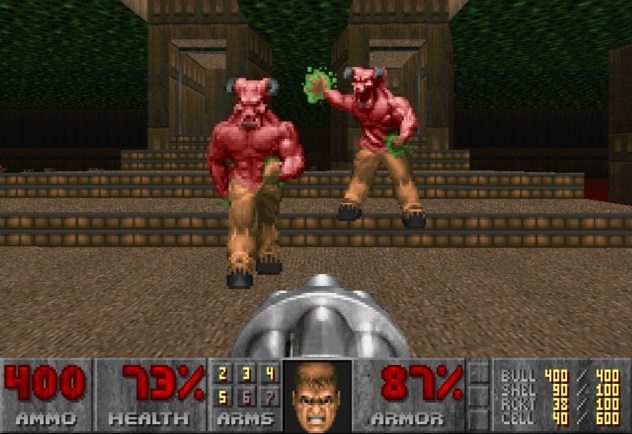
ID Software’s 1993 hit video game Doom was the talk of the town back in the day. Not only was it incredibly fun to play, but it was also remarkably scary for the time. Tasked with battling zombie revenants and inter-dimensional demons, players found themselves quite literally venturing into Hell over the course of the game.
At the time of its release, Doom was arguably one of the most controversial computer games on the market. It featured graphic violence, occult symbols, and all sorts of horrific monsters as villains. As the game was released at the tail end of the 1980s Satanic panic, it’s no surprise that it got wrapped up into the same controversy that metal music did.[6] Curiously, much of the vitriol was revisited later in the 1990s, after a number of high-profile school shootings. One Christian magazine called the game a “mass murder simulator” that was responsible for the shootings themselves.
There is, however, a possible riposte at the end of all this. In 2016, the franchise was rebooted with its fourth installment, also called Doom. While playing around with a spectrogram, an inquisitive user named TomButcher might have found an Easter egg in the game’s soundtrack. Hidden inside one of the tracks appears to be a repetition of the number “6.” Other users have reported discovering pentagrams and other symbols hidden inside the music. It’s not clear to what extent this was intentional by publisher Bethesda, but it would be an apt tribute to the earlier craze revolving subliminal Satanism in music.
4 Jack Chick’s Cartoon Tracts
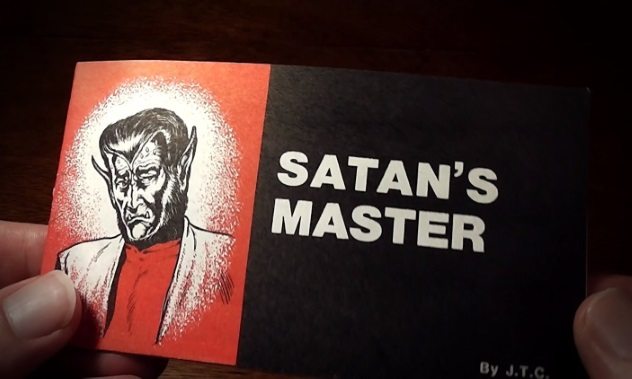
During the 1980s, some of the most visible proponents of the Satan scare were television and radio commentators. However, the most widely influential was likely Jack Chick, a cartoon artist. Chick started his career a decade earlier, authoring comics about sin and its brutal consequences. He then leaped to stardom during the early 1980s Satanic panic.[7]
While Chick authored comics about virtually every topic under the Sun, many of his most well-known and widely read works dealt with Satanism. He believed in the active presence of witches and the very “real” threat of Satan influencing Americans. All of this made its way into his comics. Popular targets such as D&D, Halloween, and rock music became the Devil’s instruments. He denounced religions such as Islam and Judaism, and even other Christian denominations such as Catholicism, as roads to Hell. He painted feminism, LGBT rights, and New Age spirituality as evidence of Satan’s “negative” influence on society.
What makes these cartoons so important is that Chick’s tracts were not part of a radical Christian fringe but were widely read by the Protestant mainstream and beyond. His little books found their ways into children’s school bags and classrooms. They were traded during Christian youth groups and after minor league soccer. They continue to be read to this day. A large repository of his cartoon tracts is available online in its entirety.
3 IRA Black Masses

During most of recent history, Northern Ireland has been the site of ongoing armed conflict between the United Kingdom and the Irish Republican Army (IRA). The conflict escalated during the late 1960s into a period known as “the Troubles.” While the Troubles preceded the Satanic panic in the US by a decade, the fear of Satan was already spreading in Western societies. To capitalize on this, British military intelligence engaged in certain “black operations” in Northern Ireland, hoping to discredit the IRA by linking them with Satanism.[8]
Between 1972 and 1974, the British spread rumors that the IRA was performing black masses and other strange rituals associated with Devil worship. They claimed they found evidence of the IRA using black candles and overturning crucifixes in derelict buildings. The campaign was apparently meant to spread propaganda that mirrored ideas already present in popular culture thanks to horror films and literature. By associating the violence of the IRA with Satanism, it was hoped that the public would see the IRA’s goals as being fueled by evil forces and not political reasons. It would then hurt the IRA’s credibility with its Catholic supporters.
Ultimately, the British effort failed to gain long-standing traction. What is perhaps more surprising is that Protestant militias did begin ritualistic killings of Catholics in Northern Ireland during the worst years of the conflict.
2 Thurston County Ritual Abuse Case

In 1988, sisters Ericka and Julie Ingram of Olympia, Washington, reported to police that their father had been ritualistically abusing them for years. When pressed for details, they claimed that he was in a Satanic cult that also slaughtered babies and engaged in frequent gang rape. Even worse, some of the members worked in the Thurston Country sheriff’s department, where their father also worked.[9]
As the case progressed, the sisters’ confessions grew more and more gruesome and graphic. However, there was no forensic evidence to support any of the claims. When their father, Paul, was brought in for questioning, he had no memory of the charges leveled against him. However, in a bizarre twist of fate, when questioned, he chose to confess to all the crimes in a matter of minutes. As such, Paul Ingram was convicted based on his confession and sentenced to 20 years behind bars for rape. He was released early in 2003.
The trial is notable not only for the sensation it caused in the media at the time. It also caused a surge in people suddenly “remembering” that they had been sexually or ritualistically abused as children.
1 The McMartin Preschool Trial
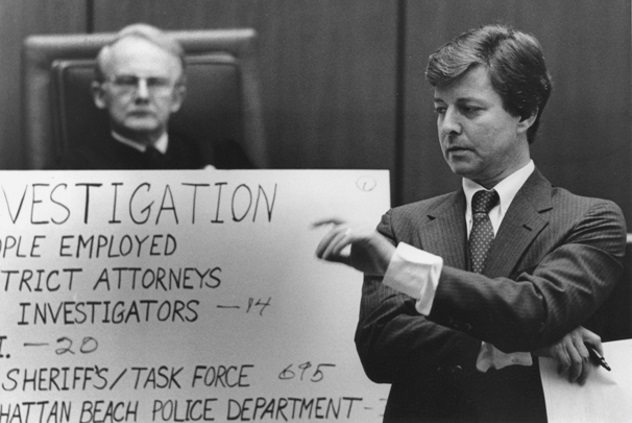
In 1983, the mother of a child attending a preschool in Manhattan Beach, California, reported to the police that her son had been molested. She claimed her boy’s physical discomfort was due to a teacher, Ray Buckey, molesting him. However, the charges didn’t end there. Other children stepped forward, claiming to have been abused. The investigation soon expanded to include additional charges of sexual molestation, the production of child pornography, and participation in Satanic rituals. Eventually, school administrator Peggy McMartin Buckey (Ray’s mother) and several members of the staff were under investigation as well.
The ensuing investigation and multiyear trial became the longest and most expensive criminal trial in US history at the time. It involved examinations and testimonies from over 400 children, 124 witnesses being called to testify, and over 900 exhibits presented in court.[10] The accused were even placed on a $15 million bail. However, when the case wrapped up in 1990, all of the defendants were found not guilty.
In the end, the debacle destroyed the lives of countless people involved. The accused were forced to live with the stigma of the trial, and many parents believed their children were, in fact, abused at the school. Even worse, the McMartin trial is notable for having essentially kick-started the Satanic abuse craze in the US.
Alicia Sarkar is a Bengali-Canadian writer and researcher. She spends her time diving into the weird and forgotten parts of history.
Check out more things the Devil has been blamed for on 10 Common Things People Believed Were Invented By The Devil and 9 Ridiculous Satanism Panics.
